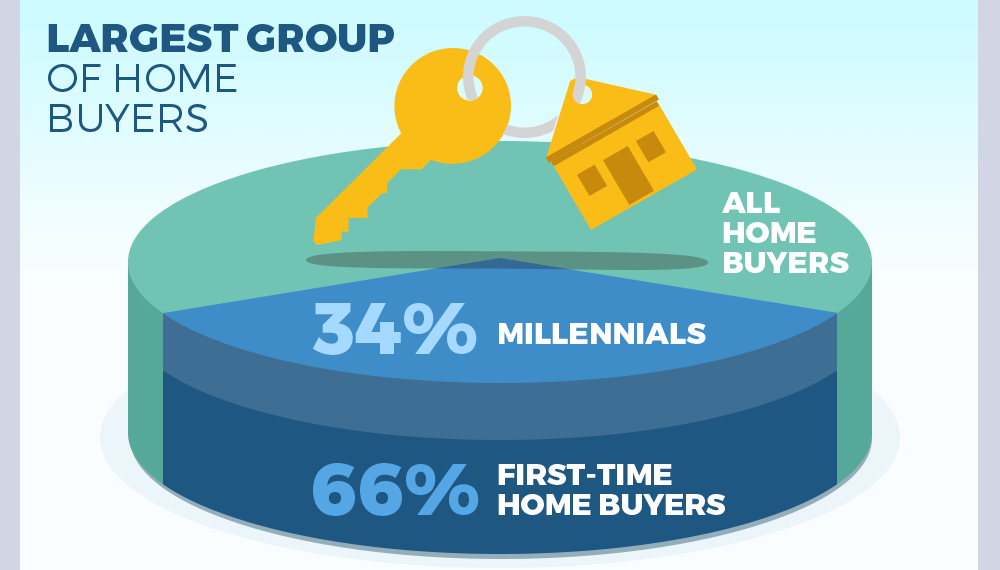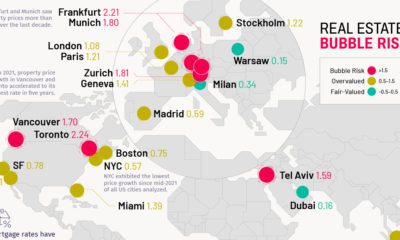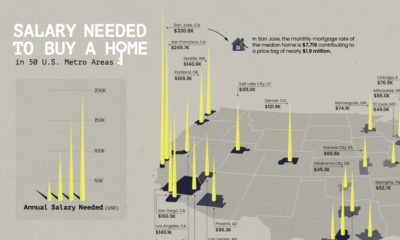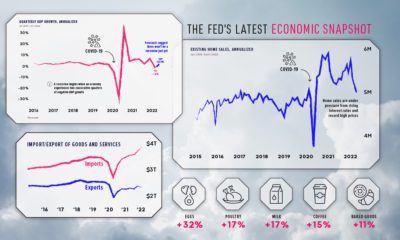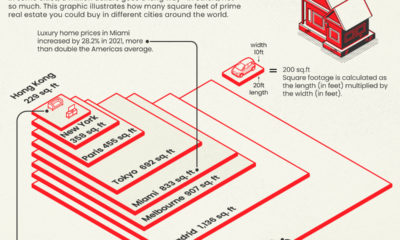That kind of demand from the largest generation in American history certainly doesn’t go unnoticed – and it’s enough that it will help to shape the direction of the real estate industry itself.
Thinking Different
Each generation is different, so it’s no surprise that millennials have their own set of unique attitudes towards home buying. Today’s infographic from Nationwide Mortgages takes a look at some of these differentiating factors, and provides some insight into how these preferences will create the drivers that ultimately affect the market as a whole.
It’s clear millennials are approaching the housing market in their own way that makes them unique from past generations. But what is it specifically that differentiates millennials in their attitudes and behaviors towards real estate?
Why Millennials Are Unique
As a group that grew up in the iPhone era, it’s obvious to say that millennials prefer to approach home buying in a more digital fashion, but they actually have other differences with Gen X and the Boomers that go much deeper. To start, millennials much prefer to trust real estate agents than other generations. Only 8% of millennials did not use a realtor for their home purchases, while 13% of younger Boomers and 15% of older Boomers could say the same. Whether this is because of a lack of experience in the market, or because different attitudes towards agents, it’s hard to say. Next, millennials associate buying a house with the American Dream at a higher rate (65.3%) than other groups. They do so even more than the Silent Generation (63.9%) – the group that grew up during World War II, and reaped the benefits of the post-war economic and housing booms. Lastly, there are some other areas where millennials just have different preferences and attitudes towards owning a home. For example, they are less likely to define homeownership as permanent (11%), and consider their purchase only as a stepping stone towards the house they want (68% for millennials vs. 36% for all buyers). On top of that, they want very specific features in any home they buy – including things like new appliances, energy efficiency, big kitchens, home office space, proximity to work, and new technology in their homes. Though some of the things that millennials want are treasured by other generations as well, millennials are having an impact on the industry just by the nature of their growing influence on the market. And for anyone that’s selling a house or making investments in real estate, this is a factor that should be taken into account.
on The good news is that the Federal Reserve, U.S. Treasury, and Federal Deposit Insurance Corporation are taking action to restore confidence and take the appropriate measures to help provide stability in the market. With this in mind, the above infographic from New York Life Investments looks at the factors that impact bonds, how different types of bonds have historically performed across market environments, and the current bond market volatility in a broader context.
Bond Market Returns
Bonds had a historic year in 2022, posting one of the worst returns ever recorded. As interest rates rose at the fastest pace in 40 years, it pushed bond prices lower due to their inverse relationship. In a rare year, bonds dropped 13%.
Source: FactSet, 01/02/2023.
Bond prices are only one part of a bond’s total return—the other looks at the income a bond provides. As interest rates have increased in the last year, it has driven higher bond yields in 2023.
Source: YCharts, 3/20/2023.
With this recent performance in mind, let’s look at some other key factors that impact the bond market.
Factors Impacting Bond Markets
Interest rates play a central role in bond market dynamics. This is because they affect a bond’s price. When rates are rising, existing bonds with lower rates are less valuable and prices decline. When rates are dropping, existing bonds with higher rates are more valuable and their prices rise. In March, the Federal Reserve raised rates 25 basis points to fall within the 4.75%-5.00% range, a level not seen since September 2007. Here are projections for where the federal funds rate is headed in 2023:
Federal Reserve Projection*: 5.1% Economist Projections**: 5.3%
*Based on median estimates in the March summary of quarterly economic projections.**Projections based on March 10-15 Bloomberg economist survey. Together, interest rates and the macroenvironment can have a positive or negative effect on bonds.
Positive
Here are three variables that may affect bond prices in a positive direction:
Lower Inflation: Reduces likelihood of interest rate hikes. Lower Interest Rates: When rates are falling, bond prices are typically higher. Recession: Can prompt a cut in interest rates, boosting bond prices.
Negative
On the other hand, here are variables that may negatively impact bond prices:
Higher Inflation: Can increase the likelihood of the Federal Reserve to raise interest rates. Rising Interest Rates: Interest rate hikes lead bond prices to fall. Weaker Fundamentals: When a bond’s credit risk gets worse, its price can drop. Credit risk indicates the chance of a default, the risk of a bond issuer not making interest payments within a given time period.
Bonds have been impacted by these negative factors since inflation started rising in March 2021.
Fixed Income Opportunities
Below, we show the types of bonds that have had the best performance during rising rates and recessions.
Source: Derek Horstmeyer, George Mason University 12/3/2022. As we can see, U.S. ultrashort bonds performed the best during rising rates. Mortgage bonds outperformed during recessions, averaging 11.4% returns, but with higher volatility. U.S. long-term bonds had 7.7% average returns, the best across all market conditions. In fact, they were also a close second during recessions. When rates are rising, ultrashort bonds allow investors to capture higher rates when they mature, often with lower historical volatility.
A Closer Look at Bond Market Volatility
While bond market volatility has jumped this year, current dislocations may provide investment opportunities. Bond dislocations allow investors to buy at lower prices, factoring in that the fundamental quality of the bond remains strong. With this in mind, here are two areas of the bond market that may provide opportunities for investors:
Investment-Grade Corporate Bonds: Higher credit quality makes them potentially less vulnerable to increasing interest rates. Intermediate Bonds (2-10 Years): Allow investors to lock in higher rates.
Both types of bonds focus on quality and capturing higher yields when faced with challenging market conditions.
Finding the Upside
Much of the volatility seen in the banking sector was due to banks buying bonds during the pandemic—or even earlier—at a time when interest rates were historically low. Since then, rates have climbed considerably. Should rates moderate or stop increasing, this may present better market conditions for bonds. In this way, today’s steep discount in bond markets may present an attractive opportunity for price appreciation. At the same time, investors can potentially lock in strong yields as inflation may subside in the coming years ahead. Learn more about bond investing strategies with New York Life Investments.

